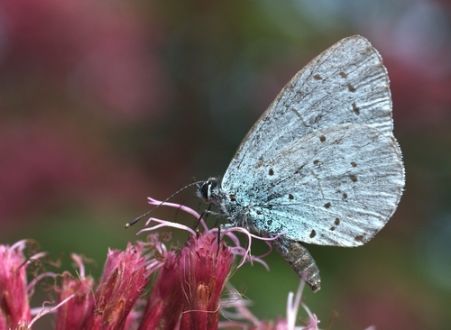
If supermodels were insects, they’d be butterflies – deceptively fragile-looking and impossibly gorgeous, turning heads whenever they appear. But there’s more to butterflies than just good looks. They do sterling work as pollinators, and a thriving butterfly population is a key indicator of a healthy ecosystem rich in biodiversity. Sadly, due to loss of habitat, pesticide use and changing weather patterns, many butterfly species are in decline, so making your garden butterfly-friendly has never been more important.
The life cycle of a butterfly
As everyone who’s read The Very Hungry Caterpillar knows, butterflies start life as caterpillars that hatch from eggs. They spend their caterpillar lives devouring plants, but most do no harm, and in fact, many eat weeds such as nettles, sorrel, dock and thistles. (There are exceptions, of course, as anyone who’s had their prize brassica crop decimated by hungry cabbage white caterpillars will testify).
Once a caterpillar has eaten its fill and grown to full size, which can take several weeks, it turns into a pupa, forming a hard casing called a chrysalis around itself. Inside the chrysalis, in a quietly astonishing transformation surely just waiting to be turned into a Pixar movie, the lowly caterpillar completely changes form, finally emerging as a beautiful adult butterfly. The glamour fades fast, sadly – most butterflies only live for a few weeks, although some that hibernate over winter can last for several months.
How to encourage butterflies into the garden
Adult butterflies are totally focused on mating and laying their eggs, so they need a nectar-rich diet to give them energy, plus plants on which to lay eggs. This means there’s an easy way to get more butterflies into your garden – simply grow the plants they love.
A butterfly-friendly garden should have nectar-rich plants flowering from spring through to autumn, and it’s also important to provide food sources for caterpillars – nettles are particularly good. Plant different types of flowering plants in groups to encourage a range of butterfly species to visit your garden. Climbing plants and evergreen shrubs will give butterflies shelter from the rain, as well as somewhere to overwinter. Water plants well in hot dry weather, as this enables them to produce more nectar, and avoid using pesticides unless absolutely necessary. Finally, remember that butterflies love the sun, so if your garden doesn’t have a handy stone wall, place a few large stones in sunny beds to give butterflies somewhere to bask.
Ten nectar plants that butterflies love
Spring and summer-flowering plants
- Heather
- Primrose
- Rosemary
- Honesty
- Forget-me-not
Summer and autumn-flowering plants
- Hebe
- Rose
- Honeysuckle
- Buddleja
- Sedum
With so many plants in flower, now’s the perfect time to turn your garden into a haven for butterflies and other pollinators, so come in and visit your local garden centre where you’ll find everything you need as well as plenty of help and advice.




